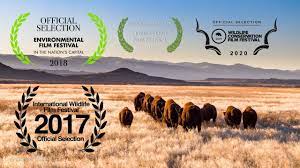The first Saturday in November is National Bison Day. The American Bison appears in many of our designs and we feel a deep affinity for this amazing creature. In observance of National Native American Heritage Month and National Bison Day, it’s important to reflect on the history of bison in the United States.
In the 1500s, prior to colonization, it is estimated that anywhere from 30 to 60 million bison roamed freely across North America. (To attempt to comprehend this number, about 2 million wildebeest currently participate in the Great Migration in Serengeti National Park.) By the end of the 19th century, only about 300 wild bison remained in North America. The US government sanctioned the slaughter of the American bison as a way to eliminate an important source of food, clothing, and shelter for Native Americans, in an effort to exterminate Indigenous Peoples and remove them from their native land.
Today, there are about 500,000 bison across North America, an estimated 95% are privately owned livestock. (Livestock bison have been bred with cattle, and are no longer considered pure or wild bison.) Indigenous leaders and conservation groups are fighting to ensure that bison are perceived as wildlife and are restored to their ancestral homelands, bringing balance back to the ecosystems and communities. Today, we’re sharing resources to learn more about the cultural importance of the American bison to Native Americans and ways you can support bison restoration and food sovereignty.


Boy-zshan Bi-den (Buffalo Return)
Produced by the National Wildlife Federation, this short film documents the return of bison to the Wind River Reservation in Wyoming in 2016. Listen to Jason Blades, Buffalo Representative for the Eastern Shoshone Tribe, speak about the history of bison in North America and the importance of herd restoration.


Where the Buffalo Roam on Voices of Greater Yellowstone Podcast
Greater Yellowstone Coalition’s Senior Wildlife Conservation Associate, Shana Drimal, discusses her own personal experiences with bison and talks about the challenges of restoring bison to their ancestral habitats. The Greater Yellowstone Coalition is working to restore and protect bison, learn more here and consider donating to their cause.


Buffalo are the Backbone of Lakota Food Sovereignty from Intercontinental Cry
As part of their series Food As Medicine, this article from Intercontinental Cry describes the importance of returning to native foodways on the Pine Ridge Indian Reservation. The article elaborates on the history and connection between bison and the Lakota tribe and the revival of bison in the community.
“The animal nation is also our relative, very closely, and the animal nation – we are part of them and they are part of us,” says Bryant High Horse, an instructor at Oglala Lakota College, a coalition member. “The animals are our mentors and teachers of the universe.”
Intercontinental Cry is a publication of the Center for World Indigenous Studies. You can support their work directly here.


In honor of National Native American Heritage Month, we are donating 10% of profits from table linen sales (including table runners, all napkins, and table cloths) to North American Traditional Indigenous Food Systems (NĀTIFS). NĀTIFS is dedicated to addressing the economic and health crises affecting Native communities by re-establishing Native foodways. They imagine a new North American food system that generates wealth and improves health in Native communities through food-related enterprises. You can donate directly to their cause here.















